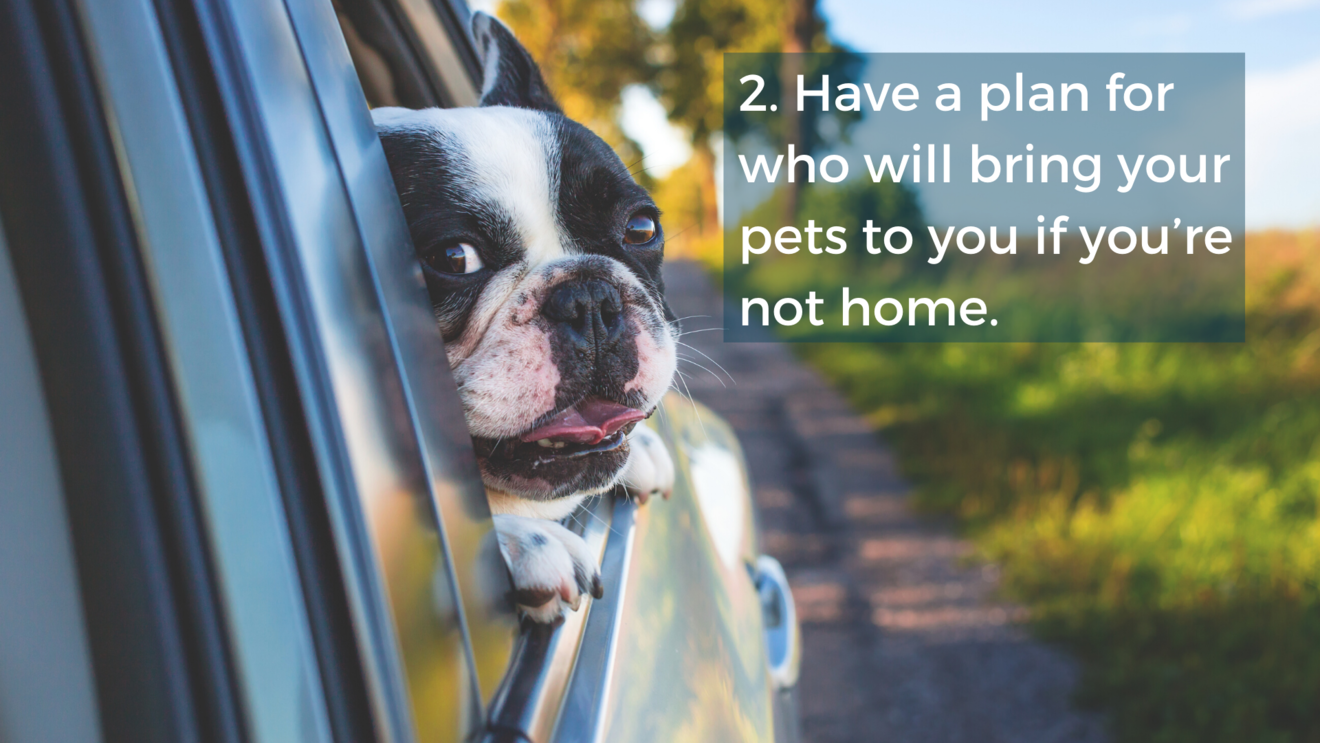Here at SDG&E, we’re often communicating the importance of emergency preparedness. In honor of National Love Your Pet Day, we wanted to remind our customers to include their furry, feathery, and scaly friends in their emergency plans. If disaster strikes, here are some important factors to consider in your emergency plan:

While evacuation shelters will likely be set up in case of an emergency, they usually won’t accept pets. It’s important you research your options from hotels/motels outside your immediate area that accept pets to family members who may be able to take you and your pets in during the emergency – or for large animals/livestock, boarding facilities or another ranch who can take them in.
Animal shelters and veterinary boarding for small animals should be a last resort as they’ll likely be spread very thin in times of emergency. Make sure you have enough crates or items to transport all of your pets at the same time.

If an emergency happens while you’re away from home, it’s important to have a plan with someone you trust and who your pets are comfortable with to be able to take them and meet with you at a planned location.

Even animals who normally stay indoors should wear identification that includes your cell number. Microchipping can also help you be reunited with your pet if they are lost.

Don’t wait until a mandatory evacuation to evacuate. The longer you wait, the more likely it becomes that you could be told to leave your pets behind and be gone for longer than you’d expect.

We often stress the importance of preparing an emergency kit for your human family, but it’s also important you have everything you need if you need to evacuate your pets. These items should be kept in a waterproof container and readily accessible in case you need to evacuate quickly.
- A minimum of three days’ supply food and food bowls, water and two weeks worth of your pet’s medications
- Pet first aid kit
- Stickers with information of your planned evacuation destination that you can stick on your pet’s tags.
- Litter boxes with litter, if you have cats
- Extra leashes and collars
- Vaccination and medical records
- Photos and descriptions of each pet

Your pet will depend on you to keep them safe in case of an emergency. If a wildfire, earthquake, or other disaster occurs, the more you prepare, the safer your family and pets will be.
Much of this information came from resources provided by our partners at the San Diego Humane Society. For more pet/animal-related resources visit the San Diego Humane Society Resource Center.
Visit our Emergency Preparedness Page for more tips.